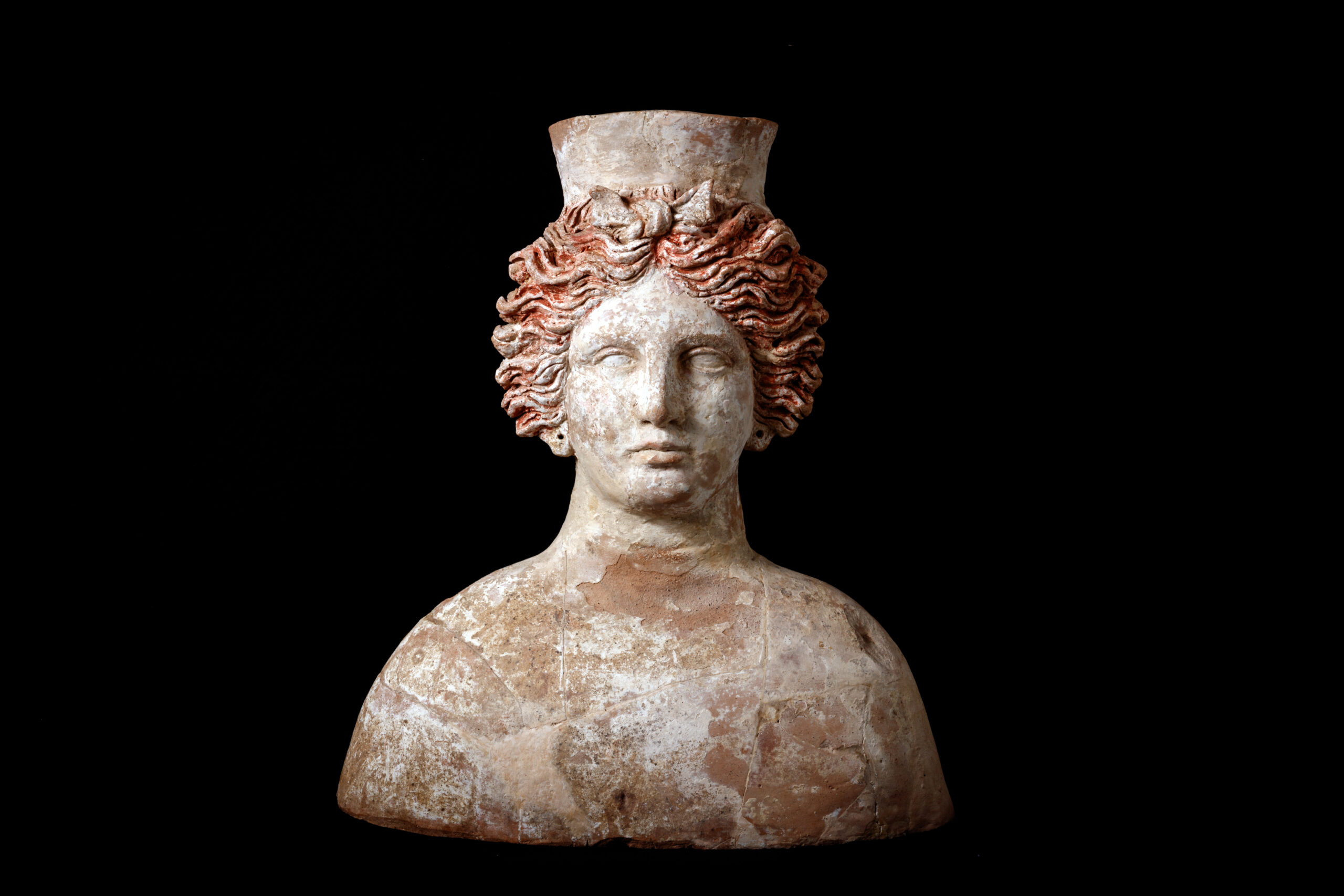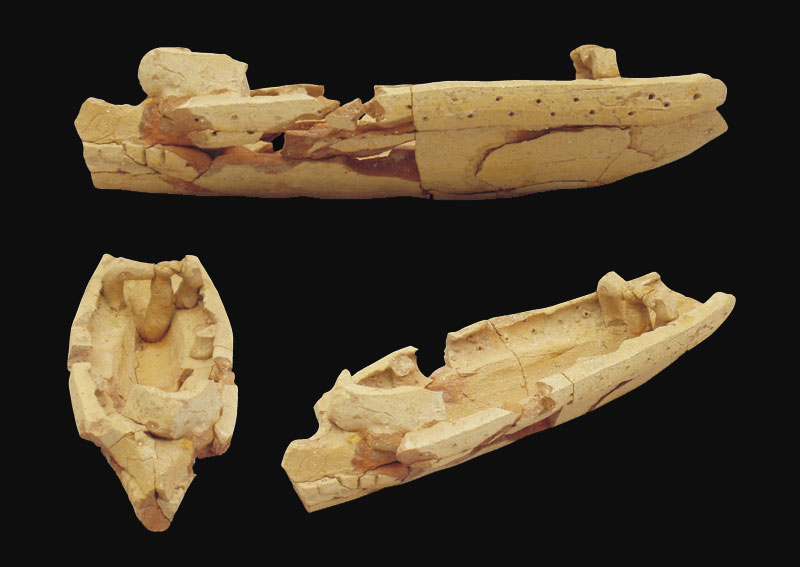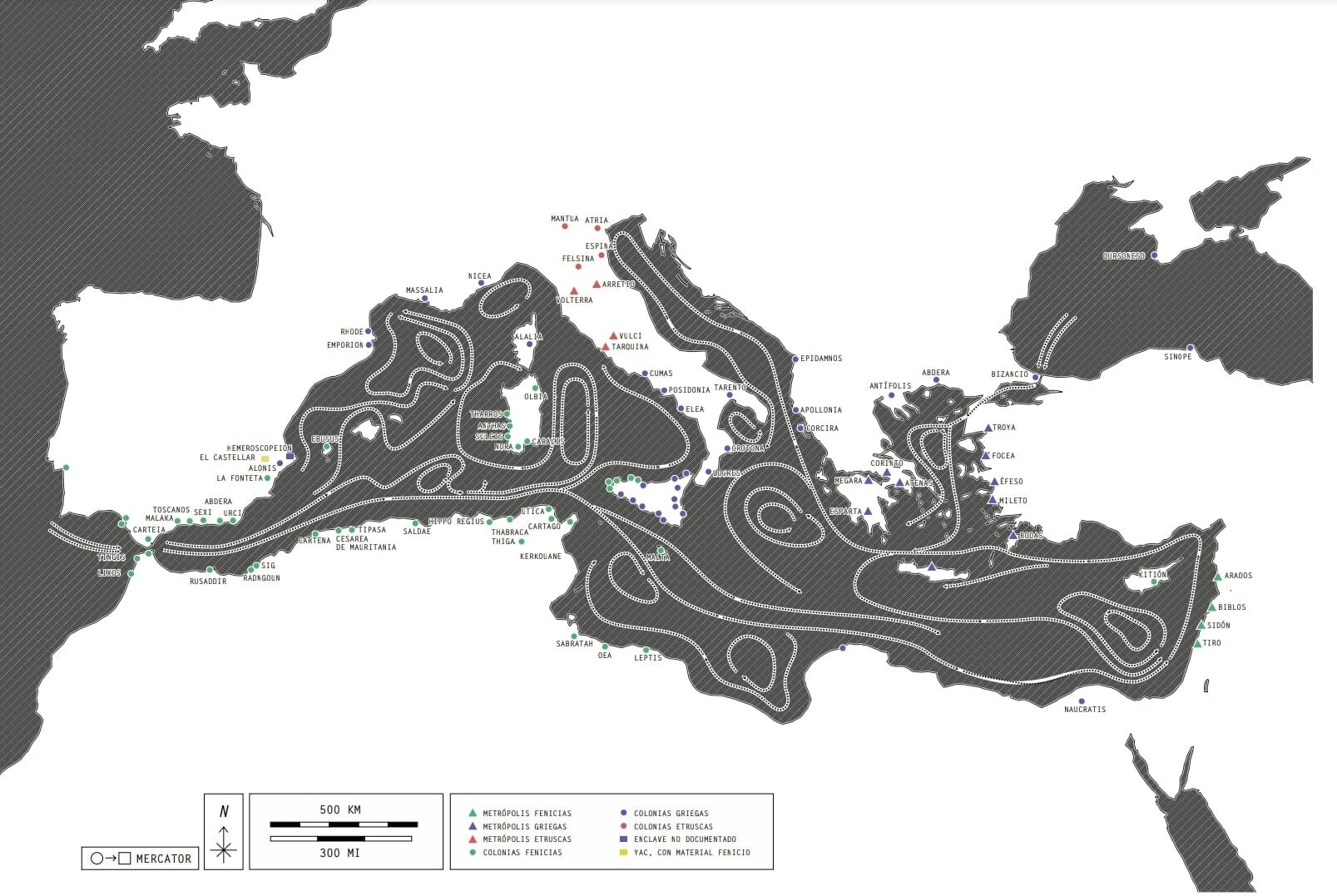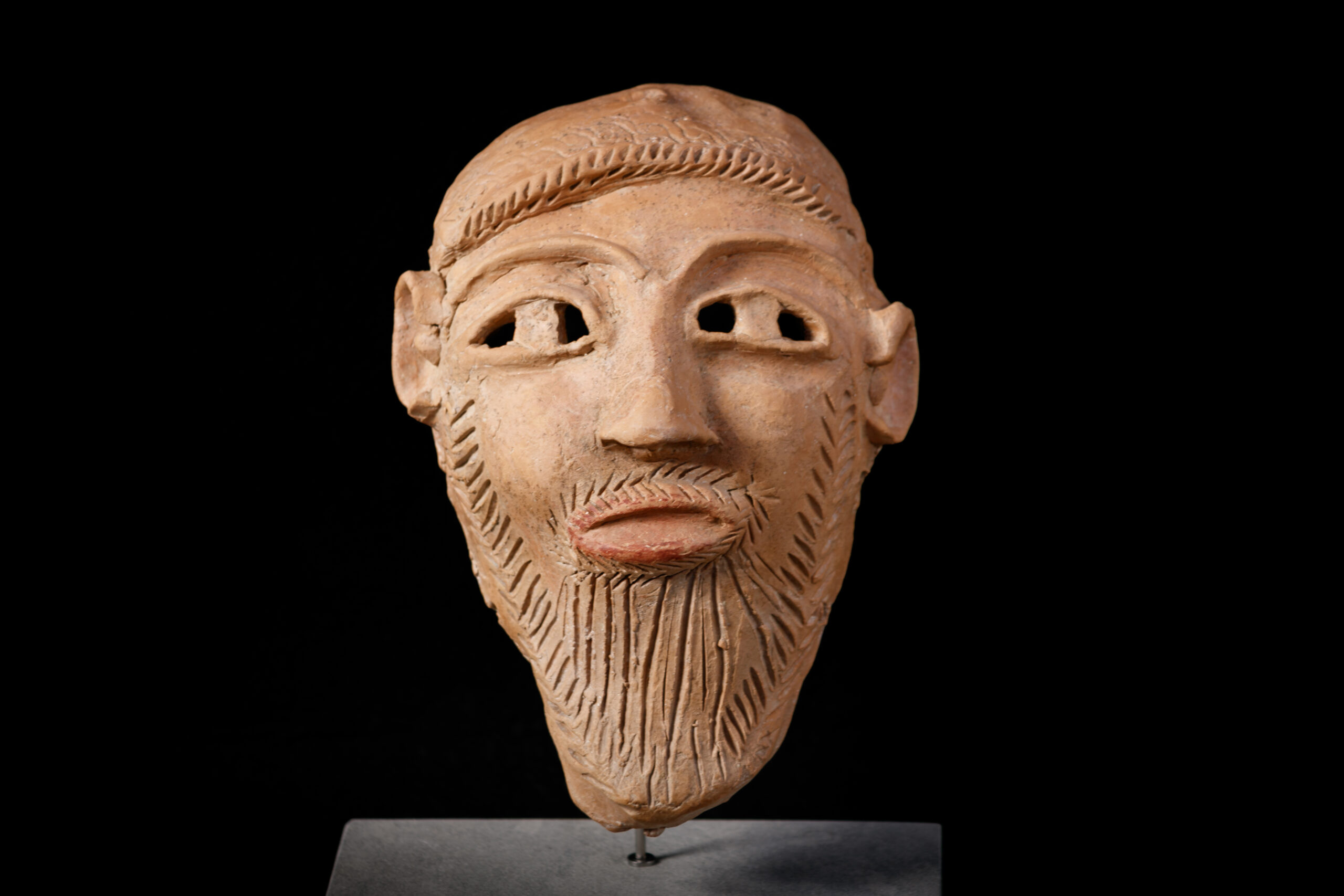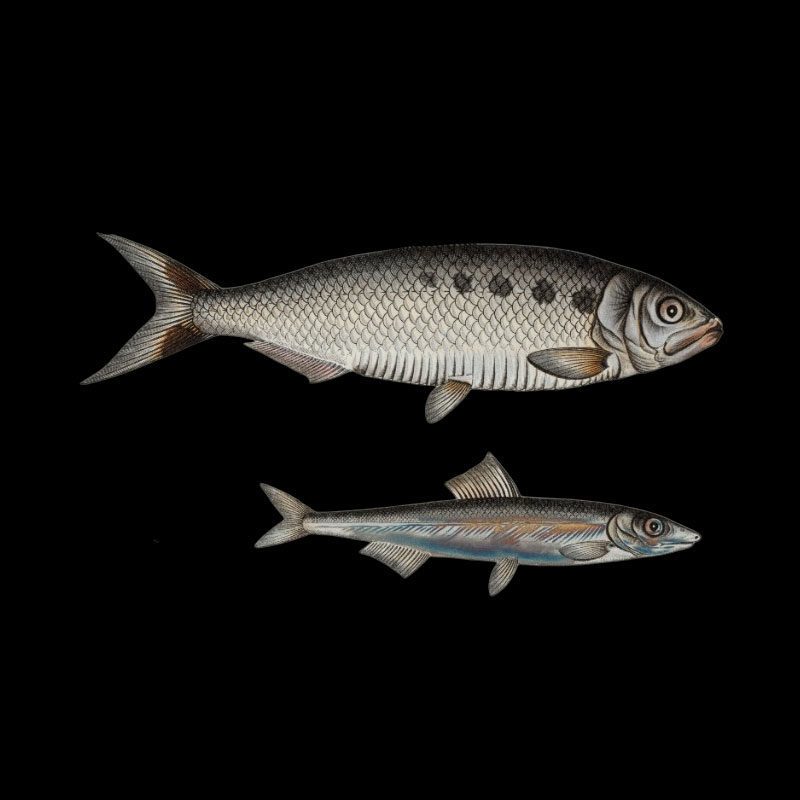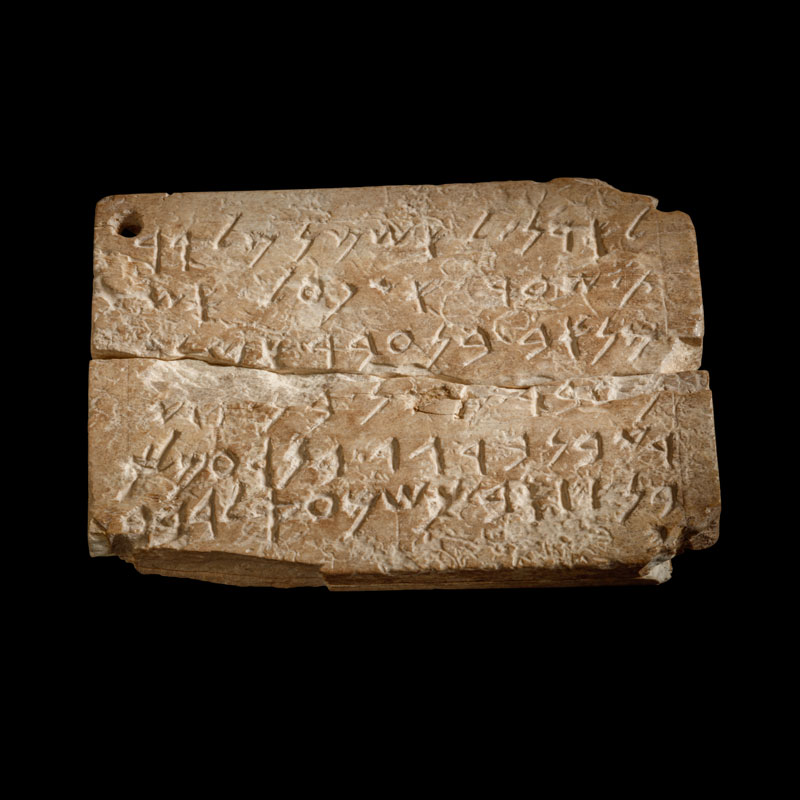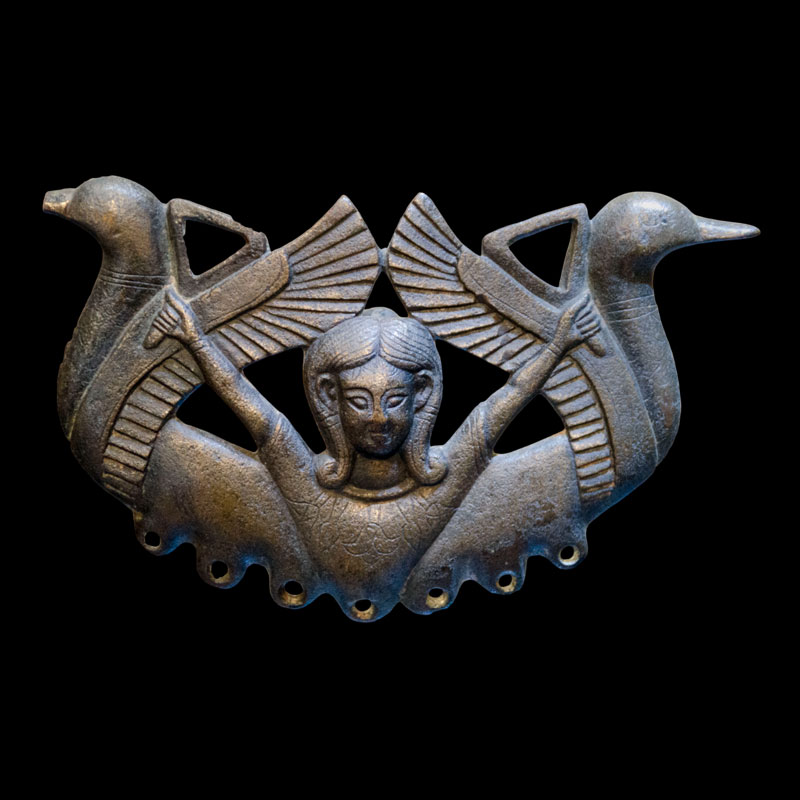NAMED PHOENITIANS SINCE 1200 B.C.
PHOENICIAN
WORLD
1. Female bust imported from Sicily.
Probable representation of the Greek
goddess Demeter or her daughter Koré.
(end of the 4th century BC – 1/2 of the 3rd
century BC). MAEF.
PHOENICIAN
WORLD
Originating from the Levantine coasts, the Phoenicians stood out as skilled navigators and traders of the Mediterranean. With naval expertise, innovation, and commercial acumen, they left an indelible mark on the historical fabric of the ancient world.
1. Female bust imported from Sicily. Probable representation of the Greek goddess Demeter or her daughter Koré. (end of the 4th century BC – 1/2 of the 3rd century BC). MAEF.Font: MAEF
THE PHOENICIANS:
MASTERS OF THE SEA
Originally from the far East coasts of the Mediterranean, the Levant, the Phoenicians stood out as skilled navigators and traders. With deftly navigation skills, innovation and trade acumen, they left an indelible mark on the ancient world.
The territory we know as Phoenicia was located in the central coastal strip of the Eastern Mediterranean, approximately where the current country of Lebanon is located. Its main cities; Byblos, Beirut and Tyre, were located on coasts or promontories, and shared cultural elements such as language and religion.
The term “Phoenician” derives from “phoídos”, related to the colour purple, used in their textile industry. Although they called themselves Canaanites, they were called Phoenicians from 1200 BC. until the conquest of Alexander the Great in 331 BC.
THE PHOENICIAN CULTURE AND SA CALETA

SHIP REPRODUCTION
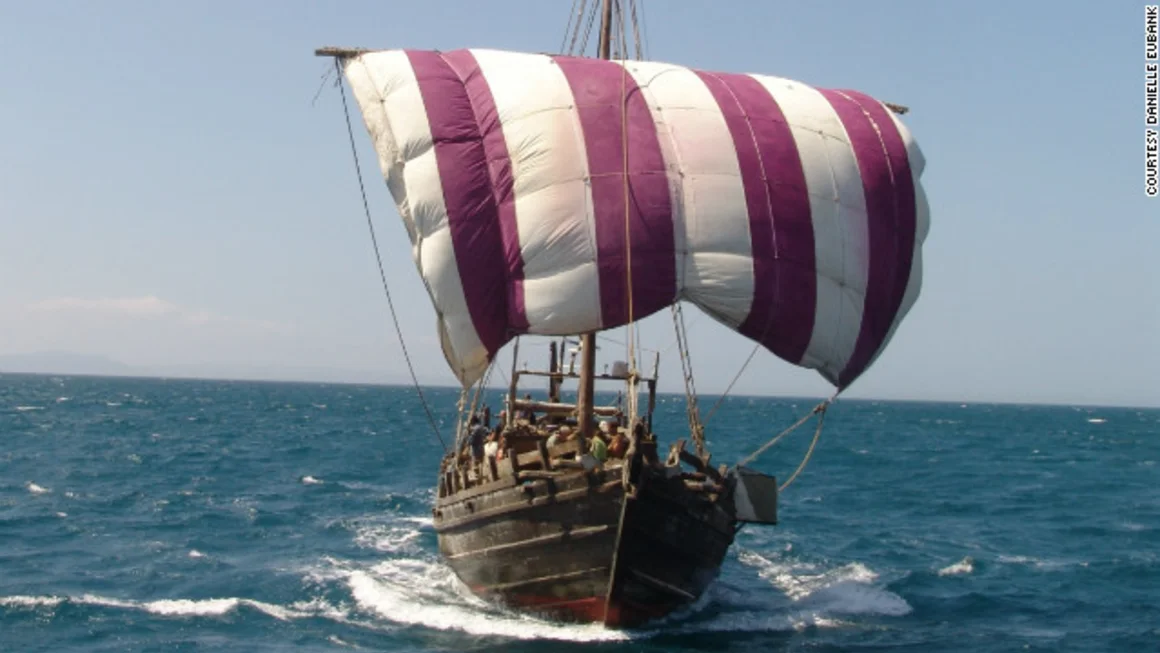
Captain Philip Beale has confirmed his hypothesis that the Phoenicians may have been the first to travel from the Mediterranean to America more than 2,500 years ago. The expedition led by Beale successfully sailed from one continent to the other aboard a Phoenician vessel.
THE PHOENICIAN LEGACY:
ANCESTRAL TRADE ROUTES
Contacts between the eastern and western Mediterranean date back to prehistory. Following the collapse of the Minoan and Mycenaean civilizations in the 14th century BC, Mediterranean trade expanded, attracting traders from the region of present-day Lebanon. This influenced later cultures, such as the Navetas in the Balearic Islands and the Nuragic culture in Sardinia.
It is from the 11th century BC. when contacts between the eastern and western Mediterranean intensified, with Phoenician expansion from Cyprus to the west, reaching regions such as England and Ireland, and establishing colonies in North Africa and the Iberian Peninsula between the 9th and 7th centuries BC. In the 10th century BC, under the reign of Hiram I, Tyre became the main city of Phoenicia, promoting a successful commercial policy.
“So the Phoenicians set out from the Red Sea and sailed the southern sea; whenever autumn came they would put in and plant the land in whatever part of Libya they had reached, and there await the harvest; then, having gathered the crop, they sailed on, so that after two years had passed, it was in the third that they rounded the pillars of Heracles and came to Egypt.” Herodotus. History, Book IV, paragraph 42.
TERRACOTTA BIREME
PHOENICIAN TRADE ROUTES AND COLONIES
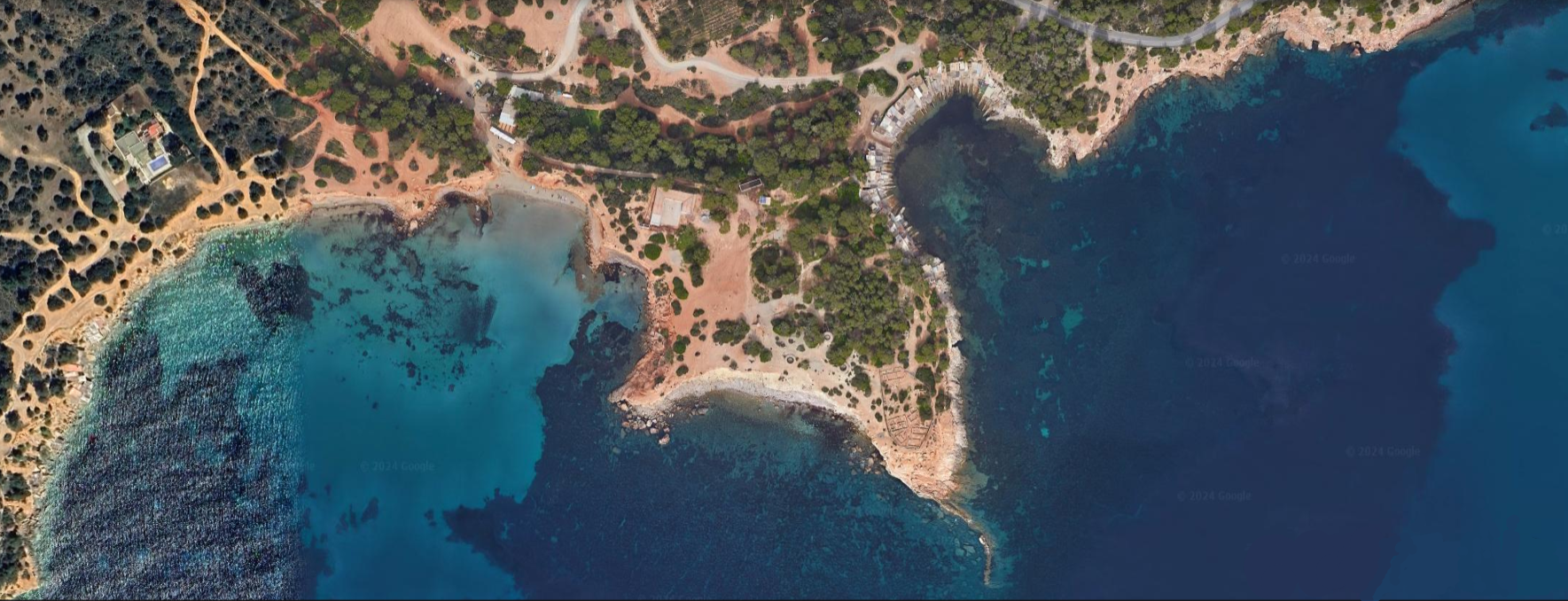
SA CALETA:
STRATEGIC COLONY
BEARDED FUNERARY MASK
Bearded funerary mask with painted decoration. Locally produced, hand-modeled, in the Punic-Ebusità style, inspired by Carthaginian models. (400-300 BC). MAEF.
MEDAL
At an undetermined time between the end of the 8th century and the beginning of the 7th century, the settlement of Sa Caleta was founded. It is a time of great territorial and commercial expansion, characterized by the establishment of new settlements in the Central and Western Mediterranean such as Cerro del Villar (Málaga), Sexi (Almuñécar, Granada), Adra (province of Almería), La Fonteta (Guardamar del Segura, Alicante) or Bithia (Sardinia), by the western Phoenician colonization.
The various ceramic assemblages documented in the settlement, such as amphorae as T-10111 (Ramón 1995: 229-230), are present in a large number of sites, demonstrating, among other things, their contact and interaction.
The colony at Sa Caleta was strategically established in a sheltered bay, establishing itself as a crucial centre for the commercial and maritime activities of the Phoenicians in the western Mediterranean. Its proximity to important trade routes and its connection with other Phoenician colonies in the region consolidated the position of Sa Caleta as a strategic commercial settlement of a certain urban sophistication.
The archaeological finds at Sa Caleta include residential structures, warehouses and workshops, offering valuable information about daily life, economical practices and the Phoenician cultural influence in the area.
The foundation of Sa Caleta serves two purposes: that of connecting and developing the communication route that runs from central Mediterranean through Sardinia and follows towards Ibiza, which was a required stopping point. This vital navigation line allows to navigate and connect both the Northwest of the Peninsula with the south area. The second purpose is to take advantage of the numerous economic resources of the island itself, metallurgical, fishing, and the salt flats near the settlement.
IBIZA
“The island is not excessively fertile; It has little cultivated land planted with vines and olive trees grafted on wild olive trees. Of what is produced there, they say that what takes the biscuit is the extreme softness of its wool. The island alternates between plains of notable extension and hills, and It has a city called Éreso, a colony of the Carthaginians. It also has excellent ports, large walled buildings and a significant number of well-built houses. It is inhabited by barbarians of various ethnicities, but the Phoenicians predominate. The colony was founded one hundred and sixty years ago, after the founding of Carthage”
Diodorus of Sicily, Bibliotheka historica, Book V, 16.
PHOENIC WORLD IN SA CALETA,
ARCHAEOLOGICAL FINDINGS

